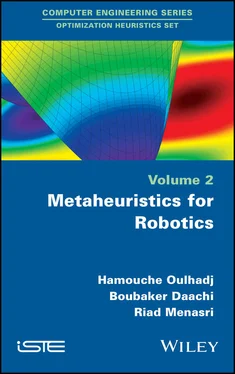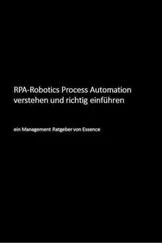This book is organized into five chapters.
Chapter 1is a general study which reviews the mathematical foundations needed for modeling optimization problem in order to solve them using numerical methods. A list of basic methods can be found therein, including comments and a great deal of information about their characteristics and properties. This chapter is essential for understanding the approaches developed in the following chapters to solve more complex medical problems.
Chapter 2focuses on the application of metaheuristics in optimization problems related to robotics. Particular emphasis is placed on issues related to the fields of trajectory planning and automatic control. The challenges encountered, the difficulties that have to be overcome and the pertinence of metaheuristics for their solution in an approximate but sufficiently effective manner are described with the utmost concern for clarity. Most common general algorithms within these two areas of application are also presented in detail.
Chapter 3is dedicated to the specific problem of trajectory planning for redundant manipulative arms. A resolution method based on a bigenetic algorithm (two genetic algorithms running in parallel) is presented in this chapter. Inspired by two-tier optimization problems, this method distinguishes two planning spaces: the Cartesian space, in order to control and guide the movements of the effector (terminal organ of the manipulative arm) in the work environment, and the joint space, in order to operate the different segments of the motorized arm. The coordination of the movements of the robot within these two spaces is ensured by the collaboration of the two genetic algorithms. Each of these two algorithms uses its own decision variables and optimizes its own objective function by exploring its limited planning space (Cartesian space or joint space exclusively). Nonetheless, the decision-making processes of the two algorithms are achieved through interaction by permanently exchanging their data. In this way, the results of one of the algorithms are also exploited by the other, in order to strengthen or correct its own decisions.
Chapter 4focuses on a particular aspect of trajectory planning, i.e. how smooth curves are obtained (primitive and derived curves). Based on the results produced by the method outlined in Chapter 3, the objective is to complement the latter in order to simultaneously optimize the trajectory and the dynamic behavior of the robot. For this purpose, the planning of the trajectory is reformulated in the form of a constrained optimization problem, the resolution of which resorts to a metaheuristic combining a genetic algorithm with the augmented Lagrangian method.
Chapter 5addresses the problems of state feedback control for collaborative robots. More specifically, the main topic will concern the exoskeleton, whose purpose is to increase motor skills when performing a task or for effort compensation in disability situations. The automated control system implements a PID controller. The goal is to find the optimal combination of the three actions of the controller, providing in real time the effort best suited to the needs of the assisted person:
— proportional action: the control error is multiplied by a gain Kp;
— integral action: the error is multiplied by a gain Ki;
— derivative action: the error is multiplied by a gain Kd;
The problem to be solved being combinatory by nature and using continuous variables, the difficulty lies in the almost infinite number of solutions to be tested to find the combination of parameters Kp, Ki and Kd that would produce the appropriate control torque. The second difficulty lies in the real-time operation of the PID control, in order to take into account the external disturbances and the continuous evolution of the work requested of the robot. To overcome all these difficulties, a metaheuristic based on an algorithm making use of swarm intelligence is developed. This metaheuristic is an adaptation of the particle swarm optimization (PSO) algorithm for the purposes of the application.
Finally, a general conclusion, given at the end of the book, briefly summarizes the problems studied and reviews the methods recommended for solving them appropriately. Development perspectives and avenues to be explored are also outlined to ultimately make use of the results in a clinical framework. This conclusion is followed by a list of bibliographic references that the reader can consult in order to deepen their understanding, if necessary, of the theoretical and practical concepts developed in this book.
Конец ознакомительного фрагмента.
Текст предоставлен ООО «ЛитРес».
Прочитайте эту книгу целиком, на ЛитРес.
Безопасно оплатить книгу можно банковской картой Visa, MasterCard, Maestro, со счета мобильного телефона, с платежного терминала, в салоне МТС или Связной, через PayPal, WebMoney, Яндекс.Деньги, QIWI Кошелек, бонусными картами или другим удобным Вам способом.











